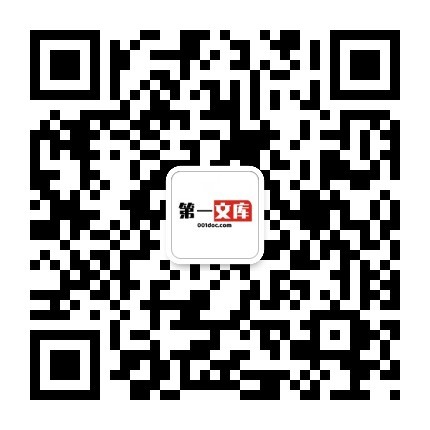《ICH M7为限制潜在致癌风险而对药物中DNA活性诱变性杂质进行的评估和控制.docx》由会员分享,可在线阅读,更多相关《ICH M7为限制潜在致癌风险而对药物中DNA活性诱变性杂质进行的评估和控制.docx(56页珍藏版)》请在第一文库网上搜索。
1、M7Assessment and Control of DNA Reactive (Mutagenic) Impurities inPharmaceuticals to Limit Potential Carcinogenic Risk为限制潜在致癌风险而对药物中DNA活性(诱变性)杂质进行的评估和控制Step 52014/6/231. INTRODUCTIONThe synthesis of drug substances involves the use of reactive chemicals, re agents, solvents, catalysts, and other pro
2、cessing aids. As a result of chemical synthesis or subsequent degradation, impurities reside in all drug substances and associated drug products. While ICH Q3A(R2): Impurities in New Drug Substan ces and Q3B(R2): Impurities in New Drug Products (Ref. 1, 2) provides guidance for qualification and con
3、trol for the majority of the impurities, limited guida nce is provided for those impurities that are DNA reactive. The purpose of this guideline is to provide a practical framework that is applicable to the identi fication, categorization, qualification, and control of these mutagenic impurit ies to
4、 limit potential carcinogenic risk. This guideline is intended to complem ent ICH Q3A(R2), Q3B(R2) (Note 1), and ICH M3(R2): Nonclinical Safety Studies f or the Conduct of Human Clinical Trials and Marketing Authorizations for Pharma ceuticals (Ref. 3).This guideline emphasizes considerations of bot
5、h safety and quality risk ma nagement in establishing levels of mutagenic impurities that are expected to po se negligible carcinogenic risk. It outlines recommendations for assessment and control of mutagenic impurities that reside or are reasonably expected to resi de in final drug substance or pr
6、oduct, taking into consideration the intended c onditions of human use.2. SCOPE OF GUIDELINEThis document is intended to provide guidance for new drug substances and n ew drug products during their clinical development and subsequent applications for marketing. It also applies to post-approval submi
7、ssions of marketed product s,and to new marketing applications for products with a drug substance that is present in a previously approved product, in both casesonly where:Changes to the drug substance synthesis result in new impurities or increased a cceptance criteria for existing impurities;Chang
8、es in the formulation, composition or manufacturing process result in new degradation products or increased acceptance criteria for existing degradation products;Changes in indication or dosing regimen are made which significantly affect the acceptable cancer risk level.Assessment of the mutagenic p
9、otential of impurities as described in this gu idelineis not intended for the following types of drug substances and drug prod ucts: biological/biotechnological, peptide, oligonucleotide, radiOpharmaceutica 1, fermentation products, herbal products, and crude products of animal or plan t origin.This
10、 guideline does not apply to drug substances and drug products intended for advanced cancer indications as defined in the scope of ICH S9(Ref. 4). Add itionally, there may be some cases where a drug substance intended for other in dications is itself genotoxic at therapeutic concentrations and may b
11、e expected to be associated with an increased cancer risk. Exposure to a mutagenic imuri ty in these cases would not significantly add to the cancer risk of the drug su bstance. Therefore, impurities could be controlled at acceptable levels for non -mutagenic impurities.Assessment of the mutagenic p
12、otential of impurities as described in this gu idelineis not intended for excipients used in existing marketed products, flavor ing agents, colorants, and perfumes. Application of this guideline to Ieachable s associated with drug product packaging is not intended, but the safety risk a ssessment pr
13、inciples outlined in this guideline for limiting potential carcinog enic risk can be used if warranted. The safety risk assessment principles of th is guideline can be used if warranted for impurities in excipients that are use d for the first time in a drug product and are chemically synthesized.3.
14、 GENERAL PRINCIPLESThe focus of this guideline is on DNA reactive substances that have a poten tial to directly cause DNA damage when present at low levels leading to mutatio ns and therefore, potentially causing cancer. This type of mutagenic carcinogen is usually detected in a bacterial reverse mu
15、tation (mutagenicity) assay. Othe r types of genotoxicants that are non-mutagenic typically have threshold mechan isms and usually do not pose carcinogenic risk in humans at the level ordinaril y present as impurities. Therefore to limit a possible human cancer risk associ ated with the exposure to
16、potentially mutagenic impurities, the bacterial mutag enicity assay is used to assess the mutagenic potential and the need for contro Is. Structure-based assessments are useful for predicting bacterial mutagenicit y outcomes based upon the established knowledge. There are a variety of approac hes to conduct this evaluation including a review of the available literature, and/or computational toxicology assessment.A Threshold of Toxicological Concern (TTC)

